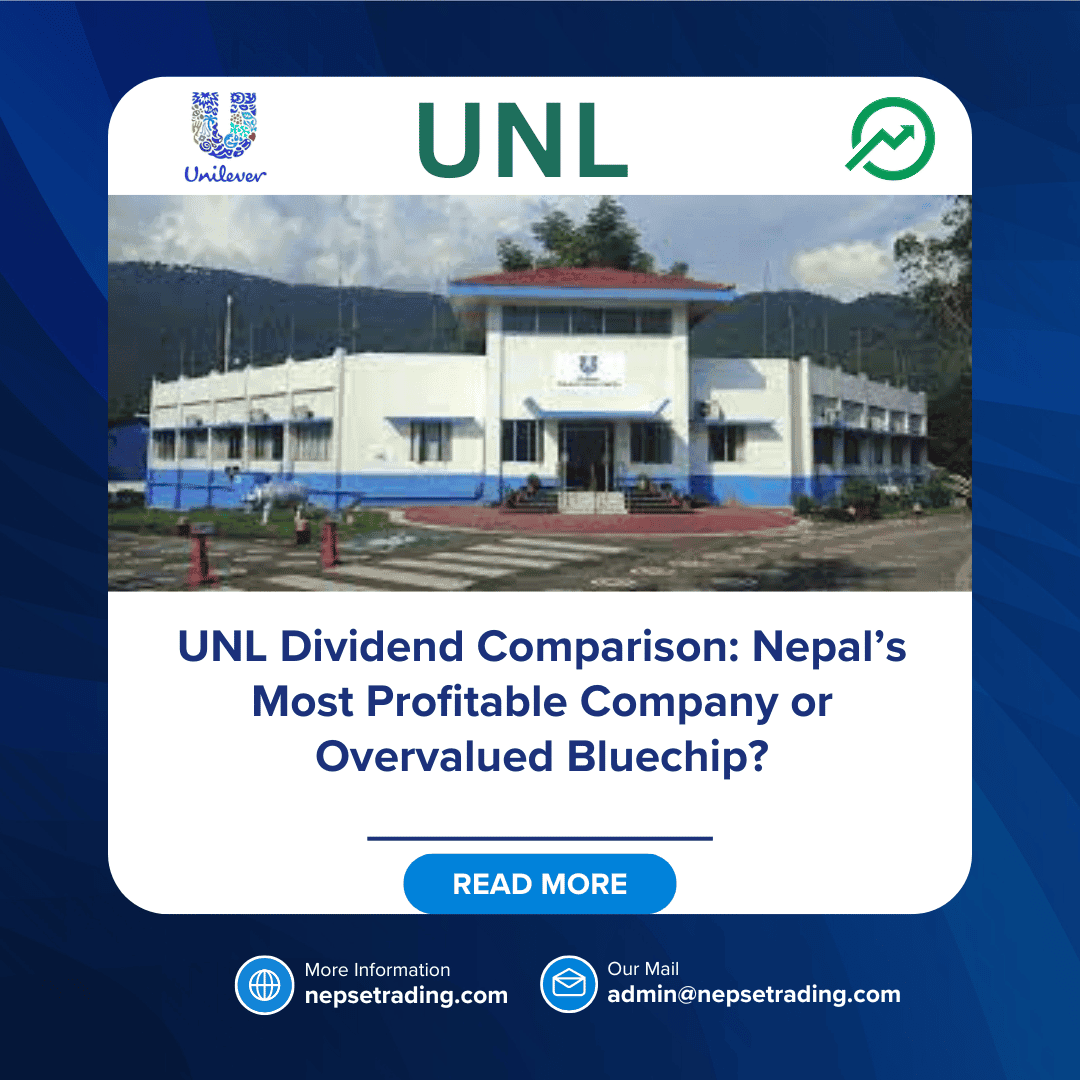By Sandeep Chaudhary
UNL Dividend Comparison: Nepal’s Most Profitable Company or Overvalued Bluechip?

Unilever Nepal Limited (UNL) has once again captured the spotlight after declaring a record 1842% cash dividend for FY 2081/82. This announcement reinforces its image as Nepal’s most consistent and profitable company — yet it also reignites debate among investors: Is UNL truly the country’s most profitable enterprise, or has it become an overvalued bluechip trading on reputation rather than growth?
Over the past 13 fiscal years, UNL’s dividend record is unmatched. From 680% in FY 2069/70 to 1842% in FY 2081/82, the company has delivered double to four-digit returns every single year. This consistency, combined with zero debt and stable earnings, has made it a “dividend aristocrat” of Nepal. But when we compare its effective dividend yield and valuation metrics, a more nuanced story emerges.
At a share price around Rs. 48,500, the 1842% dividend translates to Rs. 1,842 per share, giving a yield of roughly 3.8–4%. This is similar to — or even lower than — many commercial banks and hydropower companies that offer yields between 4–8%. The difference lies in stability and reliability: while banks’ dividends fluctuate with policy and liquidity, UNL’s payouts remain almost guaranteed. However, from an investor’s perspective, paying Rs. 48,500 for a 4% annual return raises questions about valuation and growth potential.
UNL’s latest financials show revenue growth of less than 1% and a P/E ratio above 65, both signaling that the company is priced for perfection. Its book value per share (~Rs. 5,100) results in a P/B ratio over 9, indicating the market values its stability far above its tangible assets. In essence, investors are paying a premium for brand strength, reputation, and consistent returns rather than rapid expansion.
Comparatively, Unilever Nepal’s profit margins (15–18%) far exceed those of most manufacturing firms in Nepal. Its stronghold in the consumer goods sector — led by brands like Lux, Dove, Sunsilk, Pepsodent, and Surf Excel — ensures stable cash flows and high pricing power. But with limited domestic market size and negligible export growth, UNL’s earnings expansion opportunities remain capped, suggesting that future dividends may plateau rather than accelerate.
So, is UNL overvalued? The answer depends on the investor’s lens. For income-seeking and risk-averse investors, UNL is a gold standard — a defensive stock that delivers reliability, not volatility. But for growth-oriented investors, it appears fully priced, offering minimal upside beyond its steady dividends. UNL is indeed Nepal’s most profitable company in terms of return consistency, yet it trades at a valuation that leaves little room for future growth surprises.









